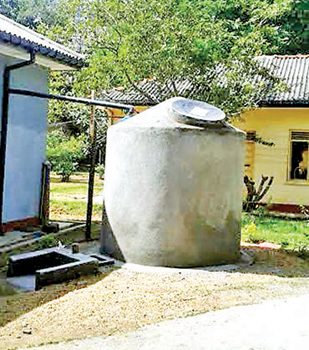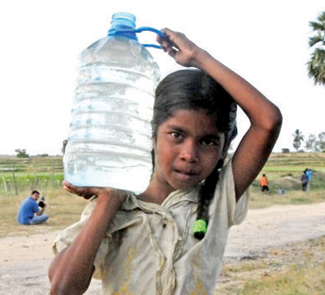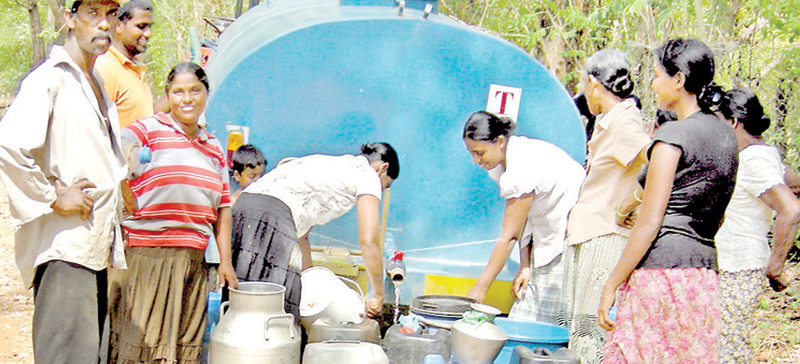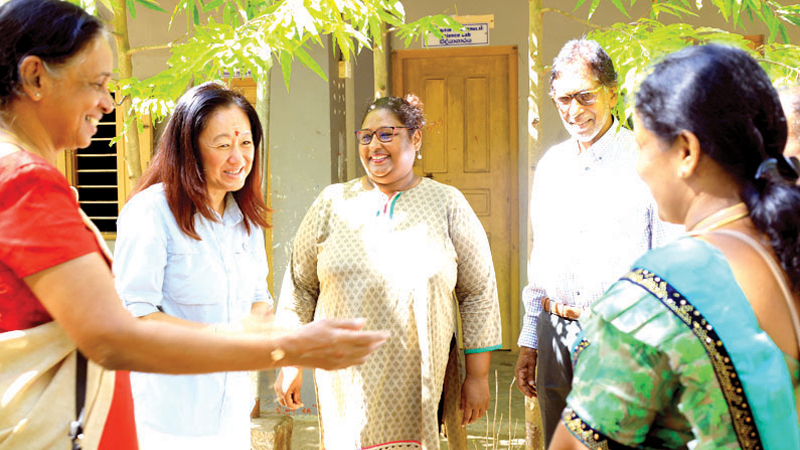The recent Global Climate Index which analyses the extent of weather related loss events mainly storms, floods and heat waves has placed Sri Lanka as the second among most affected countries. Water availability is becoming more viable and uncertain even as demand for bulk water supplies for agriculture and drinking purposes are on rapid increase. In this context, the wetter areas of the country are becoming wetter and the dry areas more drier.

Sri Lankans need a holistic national policy to conserve and manage for all to share the water resource.
There are four rainfall seasons in Sri Lanka and rainfall is unevenly distributed, varying from less than 1,000 mm per year in semi – arid parts of the country to over 5,000 mm per year on the windward slopes of the central highlands. The seasonal distribution of rain is also uneven and while the wet zone experiences a fairly well distributed rain throughout the year with short dry spells during the inter – monsoon periods, the dry zone experiences a distinct rain pattern with two dry periods from February to March and July to September.
The ancient kings of Sri Lanka treated rainwater as highly precious national assets and constructed tank systems and anicuts for colleting, storing and distributing every drop of rain water for irrigational and drinking purposes among other priorities. This concept converted the North Central Province in to the Kingdom of tanks where Anuradhapura district alone has got around 3,000 tanks. Altogether there are around 242 major, 14,200 small tanks and 12,950 anicuts are operational at present.
Water is not an unlimited resource. Even though 70 percent of the planet earth is considered as the water globe only three percent out of it is fresh water. Two-thirds of fresh water is too unavailable for human use due to having been trapped in glaciers or otherwise.
The United Nations have in this context declared March 22 World Water Day and the fourth Sunday of September World Rivers Day to make people aware of the immeasurable value of the water resources, the life line of all living creatures in the planet. Under these circumstances, a project called Safe Resilience Drinking water was launched. The project is implemented by the Lanka Rain Water Harvesting Forum (LRWHF) having been launched initially in 2016 to be completed at the end of 2025. At present, the project is in progress in the Anuradhapura, Moneragala, Badulla, Kilinochchiya, Mulaithivu and Mannar districts.

Rainwater as a drinking water source for drought and flood prone areas of
Sri Lanka
The LRWHF was established in 1996 by a small group of people interested in rain water harvesting for domestic use. The idea was to bring professionals together to promote research, foster and boost rain water harvesting in the country.
The Head of the organisation Dr. Tanuja Ariyananda told the Sunday Observer that in the 26 years journey to date the experience gained by the LRWHF has made it possible to influence the government and all other stakeholders to take to rain water harvesting as an option for unsatisfactory rural rain water supply and usage. The LRWHF has succeeded in the realisation of a national policy on rain water harvesting in 2005. The LRWHF partners with the National Water Supply and Drainage Board and also national and international agencies in the implementation of nearly 49,000 rain water harvesting approaches nationwide.
8,000 litre capacity storage tanks are promoted for domestic use while 10,000 to 16,000 litre capacity tanks are constructed for hospitals and 16,000- 32,000 litre capacity tanks for schools. During the operational period, the project has trained 133 youth on construction, operation and maintenance of rain water harvesting systems.
Clinics in Anuradhapura, Moneragala, Badulla, Mannar, Kilinochchi and Mulaithivu have been provided safe drinking water.

Rain water harvesting brings relief to parched lands







